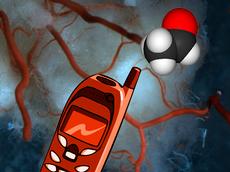RoboEarth sometimes referred to as a robot internet or a robot world wide web is being tested this week by a team of researchers at Eindhoven University of Technology (Technische Universiteit Eindhoven, Netherlands) and their colleagues at Philips, ETH Zürich, TU München and the universities of Zaragoza and Stuttgart according to a Jan. 14, 2014 news item on BBC (British Broadcasting Corporation) news online,
A world wide web for robots to learn from each other and share information is being shown off for the first time.
Scientists behind RoboEarth will put it through its paces at Eindhoven University in a mocked-up hospital room.
Four robots will use the system to complete a series of tasks, including serving drinks to patients.
It is the culmination of a four-year project, funded by the European Union.
The eventual aim is that both robots and humans will be able to upload information to the cloud-based database, which would act as a kind of common brain for machines.
There’s a bit more detail in Victoria Turk’s Jan. 13 (?), 2014 article for motherboard.vice.com (Note: A link has been removed),
A hospital-like setting is an ideal test for the project, because where RoboEarth could come in handy is in helping out humans with household tasks. A big problem for robots at the moment is that human environments tend to change a lot, whereas robots are limited to the very specific movements and tasks they’ve been programmed to do.
“To enable robots to successfully lend a mechanical helping hand, they need to be able to deal flexibly with new situations and conditions,” explains a post by the University of Eindhoven. “For example you can teach a robot to bring you a cup of coffee in the living room, but if some of the chairs have been moved the robot won’t be able to find you any longer. Or it may get confused if you’ve just bought a different set of coffee cups.”
…
And of course, it wouldn’t just be limited to robots working explicitly together. The Wikipedia-like knowledge base is more like an internet for machines, connecting lonely robots across the globe.
A Jan. 10, 2014 Eindhoven University of Technology news release provides some insight into what the researchers want to accomplish,
“The problem right now is that robots are often developed specifically for one task”, says René van de Molengraft, TU/e [Eindhoven University of Technology] researcher and RoboEarth project leader. “Everyday changes that happen all the time in our environment make all the programmed actions unusable. But RoboEarth simply lets robots learn new tasks and situations from each other. All their knowledge and experience are shared worldwide on a central, online database. As well as that, computing and ‘thinking’ tasks can be carried out by the system’s ‘cloud engine’, so the robot doesn’t need to have as much computing or battery power on‑board.”
…
It means, for example, that a robot can image a hospital room and upload the resulting map to RoboEarth. Another robot, which doesn’t know the room, can use that map on RoboEarth to locate a glass of water immediately, without having to search for it endlessly. In the same way a task like opening a box of pills can be shared on RoboEarth, so other robots can also do it without having to be programmed for that specific type of box.
There’s no word as to exactly when this test being demonstrated to a delegation from the European Commission, which financed the project, using four robots and two simulated hospital rooms is being held.
I first wrote about* RoboEarth in a Feb. 14, 2011 posting (scroll down about 1/4 of the way) and again in a March 12 2013 posting about the project’s cloud engine, Rapyuta.
* ‘abut’ corrected to ‘about’ on Sept. 2, 2014.
